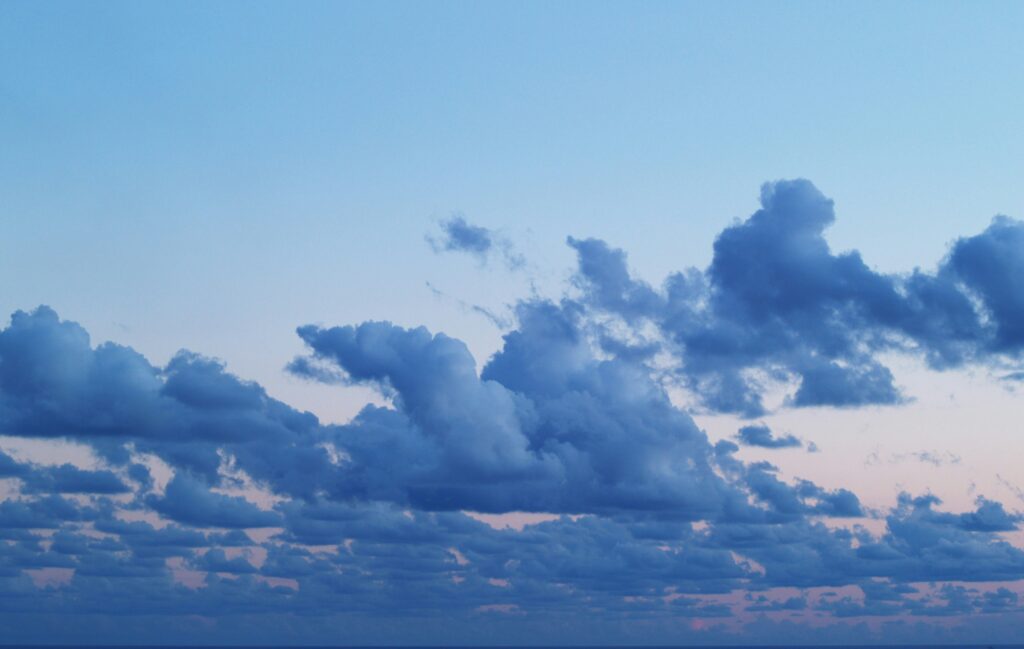Not a bird. Not a plane. And not superman. It’s a cloud. Banal, you might think. But as Charles Blaisdell wrote recently on Watt’s Up With That, “The earth’s cloud cover has long been an important puzzle in climate change.” To which we respond that you ain’t foolin’. Indeed a viewer recently asked us why the computer models put so much emphasis on CO2 when the most important greenhouse gas, and this point really is settled science, is dihydrogen monoxide. And part of the answer is, rather embarrassingly, that the impact of water vapour and clouds is too complex for even ineffective modelling so they don’t like to think about it. Another part, more embarrassing in our view, is that you can’t blame people for it, so they don’t like to think about it. Unless they can find a way to blame people for clouds not behaving.
Clouds are as complicated as they are pretty. Blaisdell starts by noting that “Cloud cover has many types and varies significantly from year to year. Ground records of global cloud cover over 40 years have shown a 0.41%/decade decrease in cloud cover. (A 37-year European only study found a 1.4%/decade decrease).” And if we don’t even know what they’re doing, well, we’re going to have trouble explaining why. Or not, in the wacky world of climate science.
Blaisdell outlines some key unanswered questions: “When did cloud cover start to decrease? Is it cyclic? How much of the of the observed global warming, GW, can be attributed to cloud cover reduction? What is causing it? Will the decrease stop? And, why should I care?”
Then he answers the last one first: you should care because “every 1% reduction in cloud cover could account for 1.6 W/m^2 (about 0.8’C) increase in earth’s net incoming energy flux – a significant part of all the observed GW. If this decrease started a 100 years ago and the current decrease is 0.4%/decade the total decrease over that time could be 2% or 3.2 W/m^2 (estimated 1.6’C GW) – more than the observed 2.2 W/m^2 (1.1’C GW).” In short, the whole warming that has alarmists in such a lather could be due to declining cloud cover not CO2, man-made, natural or both.
Of course in alarmist world, things look different. If clouds are declining and letting in more solar energy, it could be the fault of man-made CO2 provided that substance, or other man-made GHGs, are causing clouds to decline. Mind you another awkward theory is that human land-use changes are affecting cloud formation. As Blaisdell explains, “Cold air meeting warm humid air is the most common way clouds are formed.” And both conversion of forest to farmland and farmland to cities could be reducing the humidity of the warmer air in significant ways.
If so, you get to blame people and prosperity. But on the downside, you don’t get to blame CO2 which is going to be an embarrassing climb-down at this point.
It's an interesting theory. It’s not settled science. But since the science of cloud formation generally is not settled, and the relationship of clouds to global warming is not settled, it’s something that urgently needs attention from anyone who can look away from the CO2 dogma. Though as noted you might still get to blame humans, and human prosperity, if that consideration matters more to you than adherence to the normal scientific method of seeking truth through the testing of hypotheses rather than moralistic denunciations.



CAGW hysteria is the new "original sin" and permeates all forms of rent seeking bounty funded reinforcement masquerading as "climate research". Human endeavor is the cause of everything unusual and detrimental and can only be properly atoned through centrally planned absolution in the form of reduction of prosperity, humanity, and its impact on the planet.
I was skiing at Sunshine Village in Banff yesterday (May 10). We (my ski partner and I) noted how much snow is still up there at this time of year, even though I do not believe it was a particularly heavy snow year with cumulative snow at 889 cm, but I stand to be corrected on that if someone investigates further. Rather I believe it has been a very cloudy spring which has slowed the melt so far. I realize this is very antidotal and am willing to accept anyone who provides the real data on this topic.
The good news is Sunshine, as usual, expects to remain open through the May long weekend.
Of more interest to me is the Svensmark theory that clouds are seeded by cosmic rays and therefore the sun's output is key to the Earth's energy balance. Not just the sun's cosmic rays but as we transit through the arms of our galaxy the level of cosmic rays from others stars varies on a timescale of 100's of millions of years. Fascinating stuff.
I was somewhat amused when Glacier National Park realized they would need to remove all the signs they had previously posted several years ago stating that all their glaciers would be gone by 2020. Another inconvenient truth.
Isn’t testing reality against hypotheses the rational method of inquiry or learning? My granny told me that it was common sense proven scientifically. The scientific method of inquiry was in turn proved by experiment and mathematically not by invoking (political) SCIENCE.